
CHEMISTRY MOLECULAR NATURE OF MATTER
9th Edition
ISBN: 9781266177835
Author: SILBERBERG
Publisher: MCG
expand_more
expand_more
format_list_bulleted
Question
Chapter 1, Problem 1.13P
Interpretation Introduction
Interpretation: The essential features of a scientific model need to be described.
Concept Introduction: A system of events, ideas, or processes can be represented physically, mathematically, or conceptually as a scientific model. Scientists can identify and understand the world with their scientific knowledge by offering explanations to enable the patterns to be predicted.
Expert Solution & Answer
Want to see the full answer?
Check out a sample textbook solution
Students have asked these similar questions
Using the appropriate bond energies, calculate the heat of reaction AH for the following reaction:
H-H + CI-CI
2 H-CI
You can find a table of bond energies by using the Data button on the ALEKS toolbar.
Round your answer to the nearest kJ/mol.
Note: For clarity, all lone pairs have been omitted from the molecular structures.
☐
kJ
mol
ค
000
Ar
B
Predict the hydrocarbon, of formula C6H10, needed to prepare the following geminal dibromide upon treatment with excess hydrobromic acid.
Note: The shown product is the only regioisomer formed in this reaction.
HBr
H₂C.
CH3
draw the major product formed with the listed reagents
Chapter 1 Solutions
CHEMISTRY MOLECULAR NATURE OF MATTER
Ch. 1.1 - Is the following change chemical or physical?
Ch. 1.1 - Is the following change chemical or physical?
Ch. 1.1 - Decide whether each of the following processes is...Ch. 1.1 - Decide whether each of the following processes is...Ch. 1.3 - A chemistry professor can walk a mile in 15...Ch. 1.3 - The rhinovirus, one cause of the common cold, has...Ch. 1.3 - Prob. 1.4AFPCh. 1.3 - Prob. 1.4BFPCh. 1.3 - An intravenous nutrient solution is delivered to a...Ch. 1.3 - Nutritional tables give the potassium content of a...
Ch. 1.3 - A landowner wants to spray herbicide on a field...Ch. 1.3 - Prob. 1.6BFPCh. 1.3 - Prob. 1.7AFPCh. 1.3 - Prob. 1.7BFPCh. 1.3 - Mercury melts at 234 K, lower than any other pure...Ch. 1.3 - Prob. 1.8BFPCh. 1.4 - For each of the following quantities, underline...Ch. 1.4 - Prob. 1.9BFPCh. 1.4 - Prob. 1.10AFPCh. 1.4 - Prob. 1.10BFPCh. 1 - Prob. 1.1PCh. 1 - Describe solids, liquids, and gases in terms of...Ch. 1 - Use your descriptions from Problem 1.2 to identify...Ch. 1 - Define physical property and chemical property....Ch. 1 - Prob. 1.5PCh. 1 - Which of the following is a chemical change?...Ch. 1 - Prob. 1.8PCh. 1 - Prob. 1.9PCh. 1 - Prob. 1.11PCh. 1 - Prob. 1.12PCh. 1 - Prob. 1.13PCh. 1 - Prob. 1.14PCh. 1 - Prob. 1.15PCh. 1 - Prob. 1.16PCh. 1 - Prob. 1.17PCh. 1 - Prob. 1.18PCh. 1 - Prob. 1.19PCh. 1 - Prob. 1.20PCh. 1 - Prob. 1.21PCh. 1 - Prob. 1.22PCh. 1 - Prob. 1.23PCh. 1 - What is the length in inches (in) of a 100.-m...Ch. 1 - Prob. 1.25PCh. 1 - Prob. 1.26PCh. 1 - Prob. 1.27PCh. 1 - Prob. 1.28PCh. 1 - Prob. 1.29PCh. 1 - Prob. 1.30PCh. 1 - The speed of light in a vacuum is 2.998 × 108 m/s....Ch. 1 - Prob. 1.32PCh. 1 - Prob. 1.33PCh. 1 - Prob. 1.34PCh. 1 - Prob. 1.35PCh. 1 - A small cube of aluminum measures 15.6 mm on a...Ch. 1 - A steel ball-bearing with a circumference of 32.5...Ch. 1 - Prob. 1.38PCh. 1 - Prob. 1.39PCh. 1 - A 25.0-g sample of each of three unknown metals is...Ch. 1 - Prob. 1.41PCh. 1 - Prob. 1.42PCh. 1 - Prob. 1.43PCh. 1 - Prob. 1.44PCh. 1 - Prob. 1.45PCh. 1 - Prob. 1.46PCh. 1 - Prob. 1.47PCh. 1 - Prob. 1.48PCh. 1 - Prob. 1.49PCh. 1 - Prob. 1.50PCh. 1 - Prob. 1.51PCh. 1 - Round off each number in the following calculation...Ch. 1 - Prob. 1.53PCh. 1 - Prob. 1.54PCh. 1 - Prob. 1.55PCh. 1 - Prob. 1.56PCh. 1 - Write the following numbers in scientific...Ch. 1 - Prob. 1.58PCh. 1 - Prob. 1.59PCh. 1 - Prob. 1.60PCh. 1 - Prob. 1.61PCh. 1 - Prob. 1.62PCh. 1 - Prob. 1.63PCh. 1 - Prob. 1.64PCh. 1 - Which of the following include exact numbers?
The...Ch. 1 - Prob. 1.66PCh. 1 - Prob. 1.67PCh. 1 - Prob. 1.68PCh. 1 - The following dartboards illustrate the types of...Ch. 1 - Prob. 1.70PCh. 1 - Prob. 1.71PCh. 1 - Bromine is used to prepare the pesticide methyl...Ch. 1 - Prob. 1.73PCh. 1 - Prob. 1.74PCh. 1 - Prob. 1.75PCh. 1 - Prob. 1.76PCh. 1 - Prob. 1.77PCh. 1 - Prob. 1.78PCh. 1 - Prob. 1.79PCh. 1 - Prob. 1.80PCh. 1 - Prob. 1.81PCh. 1 - Prob. 1.82P
Knowledge Booster
Similar questions
- Propose Williamson ether syntheses for the following compoundsarrow_forwardIdentify all functional groupsarrow_forwardA mixture of CaCO3 and MgC2O4 of unknown mass was heated in a 0.5 L closed rigid vessel to 900 degrees C.at 400C the following reaction occurs:MgC2O4 -> MgO (s) + CO (g) + CO2 (g)At 700C a second reaction occurs: CaCO3 -> CaO (s) + CO2 (g)The solid mass in the vessel was measured to be 3.06 g at 400C and 2.03g at 900CQuestion: What is the partial pressure of CO in both temperatures? (400 and 900C), provide detailed explanation.arrow_forward
- For the following alkyne, complete the reaction sequentially (that is draw the intermediate that we can’t stop at) and then name (complete name) all 3 molecules.arrow_forwardGiven the reaction sequence below, answer the following. A. Provide the structure for A. B. Provide the structure for B (pay attention to stereochemistry). C. Provide the structure for C. D. What are the stereochemical designations for I and II (R/S)?arrow_forwardWhich of the following is the most stable carbon radical?arrow_forward
- Put the following carbon radicals in order of increasing stability.arrow_forwardDraw the major organic product for each of the following reactions (pay attention to stereochemistry).arrow_forwardThere are 2 reactions (that you know of) to achieve the following transformation: One reaction is favored over the other because it avoids a competing reaction. A. Draw the favored reaction scheme (not the mechanism), be sure to include all necessary reagents. B. Draw the reaction scheme that is not favored and include all the possible products.arrow_forward
- Both carbocations and carbon-radicals have trigonal planar geometry. True or Falsearrow_forwardTeflon (polytetrafluoroethene) is prepared via the radial polymerization of tetrafluoroethene. What other reaction conditions (reagent, etc.) are needed to accomplish this? A. NBS, Light B. Heat, Cl2 C. Peroxide, Heat D. H2SO4, H2O, Heatarrow_forwardWhich of the following compounds can be reacted with ethene to prepare 1,1- dichlorocyclopropane? A. CCl4 B. CCl2 C. CHCl3 D. CH2Cl2arrow_forward
arrow_back_ios
SEE MORE QUESTIONS
arrow_forward_ios
Recommended textbooks for you
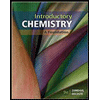 Introductory Chemistry: A FoundationChemistryISBN:9781337399425Author:Steven S. Zumdahl, Donald J. DeCostePublisher:Cengage Learning
Introductory Chemistry: A FoundationChemistryISBN:9781337399425Author:Steven S. Zumdahl, Donald J. DeCostePublisher:Cengage Learning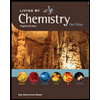 Living By Chemistry: First Edition TextbookChemistryISBN:9781559539418Author:Angelica StacyPublisher:MAC HIGHER
Living By Chemistry: First Edition TextbookChemistryISBN:9781559539418Author:Angelica StacyPublisher:MAC HIGHER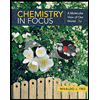
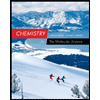 Chemistry: The Molecular ScienceChemistryISBN:9781285199047Author:John W. Moore, Conrad L. StanitskiPublisher:Cengage Learning
Chemistry: The Molecular ScienceChemistryISBN:9781285199047Author:John W. Moore, Conrad L. StanitskiPublisher:Cengage Learning General, Organic, and Biological ChemistryChemistryISBN:9781285853918Author:H. Stephen StokerPublisher:Cengage Learning
General, Organic, and Biological ChemistryChemistryISBN:9781285853918Author:H. Stephen StokerPublisher:Cengage Learning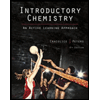 Introductory Chemistry: An Active Learning Approa...ChemistryISBN:9781305079250Author:Mark S. Cracolice, Ed PetersPublisher:Cengage Learning
Introductory Chemistry: An Active Learning Approa...ChemistryISBN:9781305079250Author:Mark S. Cracolice, Ed PetersPublisher:Cengage Learning

Introductory Chemistry: A Foundation
Chemistry
ISBN:9781337399425
Author:Steven S. Zumdahl, Donald J. DeCoste
Publisher:Cengage Learning

Living By Chemistry: First Edition Textbook
Chemistry
ISBN:9781559539418
Author:Angelica Stacy
Publisher:MAC HIGHER


Chemistry: The Molecular Science
Chemistry
ISBN:9781285199047
Author:John W. Moore, Conrad L. Stanitski
Publisher:Cengage Learning

General, Organic, and Biological Chemistry
Chemistry
ISBN:9781285853918
Author:H. Stephen Stoker
Publisher:Cengage Learning

Introductory Chemistry: An Active Learning Approa...
Chemistry
ISBN:9781305079250
Author:Mark S. Cracolice, Ed Peters
Publisher:Cengage Learning